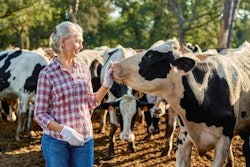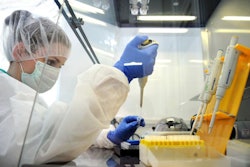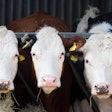
tashatuvango | Bigstock.com
During a recent webinar, a panel discussion focused on antibiotics use in farm animals
In a recent panel discussion presented by the National Institute for Animal Agriculture, several veterinary experts shared what they’ve learned throughout their years of experience about antimicrobial resistance (AMR) in farm animals.
The panelists were:
- Bill Flynn, deputy director for science policy at the U.S. Food and Drug Administration’s Center for Veterinary Medicine
- Greg Habing, veterinary epidemiologist in the College of Veterinary Medicine at The Ohio State University
- Michael Capel, partner of Perry Veterinary clinic
- Miles Theurer, research director for Veterinary Research and Consulting Services
- Scott Dee, director of Pipestone Applied Research at Pipestone Veterinary Services
- Dennis Erpelding, founder of Farm Animal View LLC
There are many challenges and opportunities for tackling AMR, and the scientific community has learned a lot about antibiotic resistance. Here are 10 of the experts’ key takeaways:
- “There are opportunities to reduce antibiotic use through both prevention and more targeted use.” – Habing on moving away from blanketed use and instead using more targeted drug therapy in animals
- “Pathogen-based therapy, as compared to blanket therapy where everyone gets treated, … can reduce antibiotic use by about 60-70% … with no negative impact on clinical outcomes.” – Capel, on the potential reduction of antibiotic use
- “We’ve got … a pretty big opportunity to make an impact in reducing (antibiotics use) if we can look at different strategies for therapy.” – Capel, on expanding strategies for treatment of disease
- “What’s been missing over time … is AMR surveillance on the farm. There’s a lot of great work looking at resistance at the human level, the food safety level but, at the pig farm level, there’s not much that’s been done lately. … We can track resistance at the pig level, but tracking at the environment level is an important component of looking at resistance – conducting surveillance at the level of the environment.” – Dee, on improving on-farm surveillance of AMR
- “Generally, more and more right now, we’re saying, if (an antimicrobial is) medically important, it should not be a continuous use product. If they’re not medically important, you look at the risk assessment, determine how you can best address the specific disease, and from that, determine what would be the appropriate use.” – Erpelding, on deciding how and when to use antimicrobials
- “There is a bit of a balance there. We can’t just say we’re not going to use medically important antibiotics because that leaves very little option for animal health. Clearly, that’s something that we have to pay attention to, to strike the right balance.” – Flynn, on balancing the needs of humans and animals in the One Health approach
- “We have to ensure the product is labeled to be fed in combination with the approved products.” – Theurer, while emphasizing that some antimicrobials should not be used in combination
- “In the male calf production chain, there are substantial challenges because it’s disaggregated – in other words, the calf changes hands multiple times. … They start off as very susceptible, they’re aggregated within auctions and then distributed out to multiple states, so it’s kind of a good way to disseminate multi-drug-resistant pathogens around.” – Habing, on why veal calves are susceptible to disease
- “There’s a growing body of evidence that suggests that only a really small number of bacteria that cause mastitis actually respond to antibiotics and most of those are in the strep family. So there’s a great opportunity, if we look at mastitis cases, to identify … the pathogen that’s causing the mastitis case and then use that date to prospectively determine which cows should be treated with antibiotics and which cows shouldn’t be treated with antibiotics or would respond the same way on their own with just supportive care.” – Capel, on taking a different approach to treating disease, such as mastitis in dairy cows
- “It is my sense, in many ways, if we’re not careful, we’re creating confusion in the consumer mind. So my counsel as we look at our labeling is how do we really streamline that, simplify that, make it so that it’s more of an informed way? One example is the One Health Certified approach … a holistic approach.” – Erpelding, on how antibiotic-free food products should be labeled


















